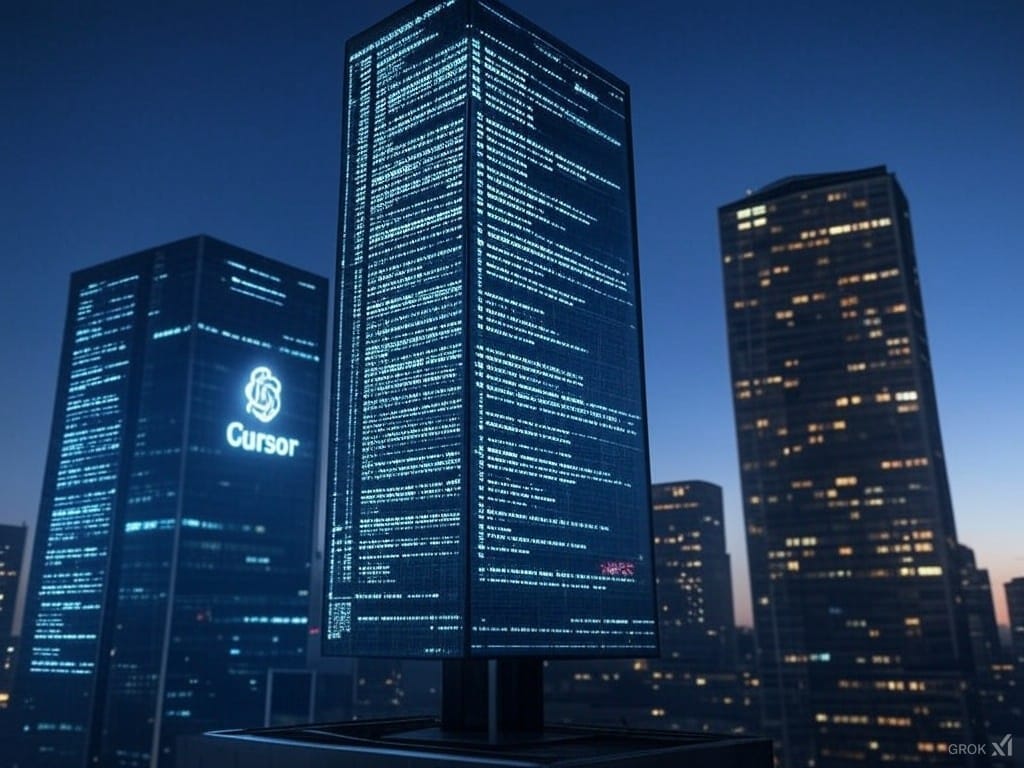
Using ChatGPT and Cursor to Generate Dense, Directed Code
Building a SaaS app requires more than just code; it demands great documentation. With Cursor, your AI-powered code generation tool, having dense, directed documentation becomes your arsenal for efficient development.
When you use ChatGPT o1 in conjunction with Cursor, you're not just generating text—you're crafting structured, actionable, and context-rich documentation that feeds directly into the development process, ensuring that the code produced is aligned with your vision and requirements.
Why You Need Dense and Directed Documentation for Cursor
Vague or overly general documentation leads to inconsistent code implementations, wasted time debugging, and difficulty scaling. Here's how ChatGPT o1 and Cursor work together to overcome these issues:
- Consistent code implementations: Every developer (or AI tool) follows the same guidelines, eliminating guesswork.
- Debugging made easy: Clear, impersonal instructions minimize mistakes and speed up corrections.
- Scalability: Future developers and AI tools rely on unambiguous guidance from your documentation.
How ChatGPT o1 and Cursor Create Next-Level Documentation
This partnership allows you to create markdown files that serve as a blueprint for both humans and AI:
1. App-flow.md
What It's For: Mapping out the user journey and data flow architecture.
Your Prompt:
Write a markdown file titled `App-flow.md` for a SaaS app. Include the user journey step-by-step (e.g., account creation, dashboard usage, reporting). Detail how data flows between the frontend, backend, and external services. Use clear terms and text-based diagrams.
2. Backend-structure.md
What It's For: Defining the backend architecture with precision.
Your Prompt:
Generate a markdown file titled `Backend-structure.md` for a SaaS app. List frameworks, core services, middleware, and database design. Include API examples (parameters, responses), error handling conventions, and security layers.
3. File-structure.md
What It's For: Ensuring consistent project organization.
Your Prompt:
Create a markdown file titled `File-structure.md` for a SaaS app. Provide a directory tree with clear explanations of folder purposes, naming conventions, and file roles.
4. Frontend-guidelines.md
What It's For: Standardizing component architecture.
Your Prompt:
Write a markdown file titled `Frontend-guidelines.md` for a SaaS app using React/Vue. Include rules for component structure, state management, and CSS standards. Provide reusable component examples and patterns.
5. PRD.md
What It's For: Defining clear, measurable product requirements.
Your Prompt:
Generate a markdown file titled `PRD.md` (Product Requirements Document) for a SaaS app. Write a problem statement, target personas, features with use cases, and specific acceptance criteria.
6. Tech-stack.md
What It's For: Documenting the technology stack with precision.
Your Prompt:
Write a markdown file titled `Tech-stack.md` for a SaaS app. List technologies, justify choices, and specify constraints with clear performance and compatibility requirements.
Pro Tips for Better Code Generation with ChatGPT o1 and Cursor
1. Show, Don't Just Tell
Embed clear examples into your documentation:
- In
Backend-structure.mdCopy, add an example for API endpoints:
POST /users/register
Request Body:
{
"username": "example_user",
"password": "secure123"
}
Response:
{
"userId": "abc123",
"message": "User created successfully"
}
- In
Frontend-guidelines.mdCopy, include reusable components:
<Button variant="primary" onClick={handleSubmit}>
Submit
</Button>
2. Define Constraints Clearly
Ensure your requirements are unambiguous:
- In
PRD.mdCopy, set performance benchmarks:- "The dashboard must load within 3 seconds for 95% of users."
- In
Tech-stack.mdCopy, outline technology constraints:- "The frontend must be compatible with React 18.x."
3. Iterate and Improve
Use ChatGPT o1 to refine documentation based on implementation feedback:
Expand the API examples in `Backend-structure.md` to include edge cases and error responses.
Final Thoughts
ChatGPT o1 and Cursor together provide a streamlined development process with documentation that works for both humans and AI.
With these precise, clear, and actionable requirements, you're future-proofing your SaaS app. Let documentation be your guide, and Cursor your co-pilot in building exactly what you envision.
Now, go and empower your development with the clarity and precision that ChatGPT o1 and Cursor offer.
Additional Resources
Happy coding with Cursor!